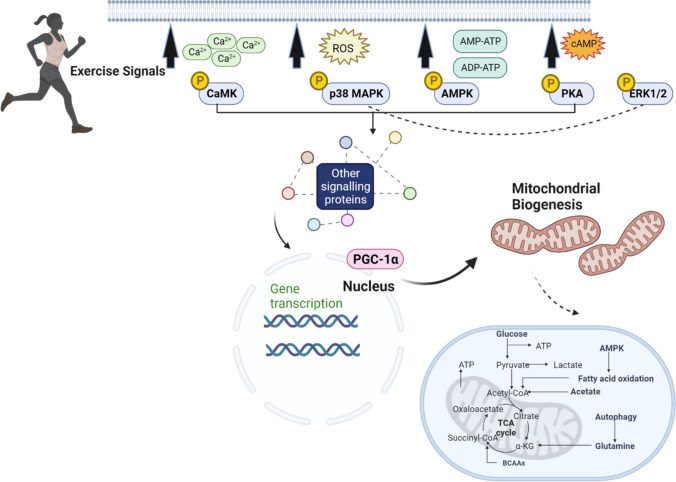Fig. 2.
Schematic overview of upstream regulation of kinases and downstream signalling pathways in response to endurance exercise. Key upstream signals induced by a single bout of muscle contractile activity result in the activation of multiple kinases and downstream signalling pathways. A bout of endurance exercise generates intracellular upstream regulatory signals [e.g. calcium, reactive oxygen species (ROS), adenosine monophosphate/adenosine triphosphate (AMP/ATP) ratio, adenosine diphosphate/adenosine triphosphate (ADP/ATP) ratio and cyclic adenosine monophosphate (cAMP)] in skeletal muscle that activate kinases and promote downstream signalling and translocation of regulatory proteins, such as peroxisome proliferator-activated receptor-gamma coactivator 1-alpha (PGC-1α), to the nucleus. Increases in intracellular calcium are linked with the activation of calcium/calmodulin-dependent protein kinase (CaMK). The activation of AMP-activated protein kinase (AMPK), p38 mitogen-activated protein kinases (MAPK), extracellular signal-regulated kinases (ERK 1/2) and cAMP dependent protein kinase A (PKA) are also involved in the skeletal muscle signalling network activated in response to endurance exercise. This ultimately leads to increases in the transcription of genes in the nucleus involved in the regulation of mitochondrial biogenesis and adaptation of cellular metabolism in response to endurance exercise. Created with BioRender.com

